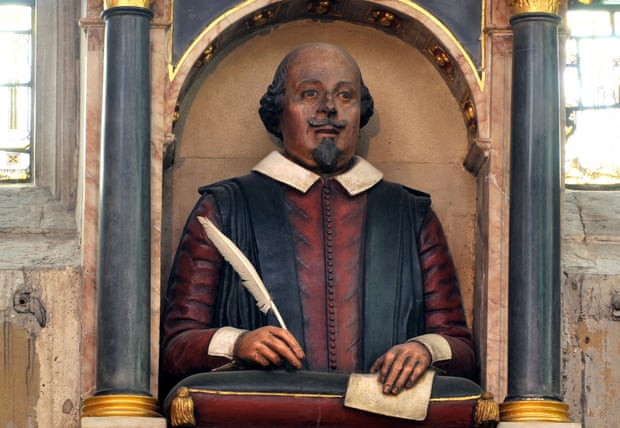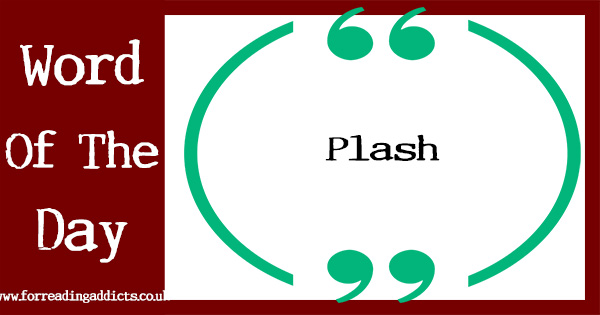Fans of William Shakespeare have wondered for centuries what the bard truly looked like but no one has known for sure, until now.
Two portraits of the playwright exist that were considered to be as close to his likeness as we would ever get, were both were painted after his death and one of which–the Cobbe portrait–may actually be a painting of courtier Sir Thomas Overbury.
Recently experts have discovered that his true likeness has been right in public sight this whole time.
The bust placed above his grave in Holy Trinity church, Stratford-upon-Avon, was first thought to have been put in place in 1616 after his death but it has recently been discovered that the effigy was actually created by a sculptor who knew him, and more than likely while the bard was alive.

The colourful sculpture, once described by 20th-century critic John Dover Wilson as a “self-satisfied pork butcher”, shows Shakespeare sitting in front of a piece of paper and holding a quill. It was originally thought to be created by a Jacobean sculptor called Gerard Johnson however Prof. Lena Cowen Orlin believes it was actually created by Gerard’s brother Nicholas Johnson, a tomb-maker.
Nicholas Johnson was in the city creating a monument for a contemporary of Shakespeare, John Combe, while Shakespeare was alive and more than likely saw the bard’s face.
Prof. Orlin, a professor of English at Georgetown University in the US, said: “It is highly likely that Shakespeare commissioned the monument. It was done by someone who knew him and had seen him in life. We can think of it as a kind of life portrait, a design for death that gives evidence of a life of learning and literature.”
Dr Paul Edmondson, the head of research at the Shakespeare Birthplace Trust (SBT) in Stratford-upon-Avon, said: “This is truly significant. We can therefore say that is how Shakespeare wanted to be represented in our memories. This is massive. It is compelling new light on what he looked like and how he operated.”
The professor also claims that the inscription painted on the memorial’s plaque shows was more than likely created while Shakespeare was alive with space left for the date of his death to be added later.
“Whoever came in to fill in the date after Shakespeare died didn’t understand that he was supposed to use a whole line to give that important information,” she said. “The fact that it’s squeezed in there so awkwardly is another bit of evidence that the rest of it would have been done during Shakespeare’s life.”
According to The Guardian, the fact Shakespeare did not leave details for a memorial in his will suggests he commissioned the effigy during his lifetime.
This news has brought great excitement to history and English literature experts, many of whom consider the news groundbreaking.

Word of the Day – Steadfast

Word of the Day – Motte

Word of the Day – Plash

Word of the Day – Fulgurate

Word of the Day – Eustress

